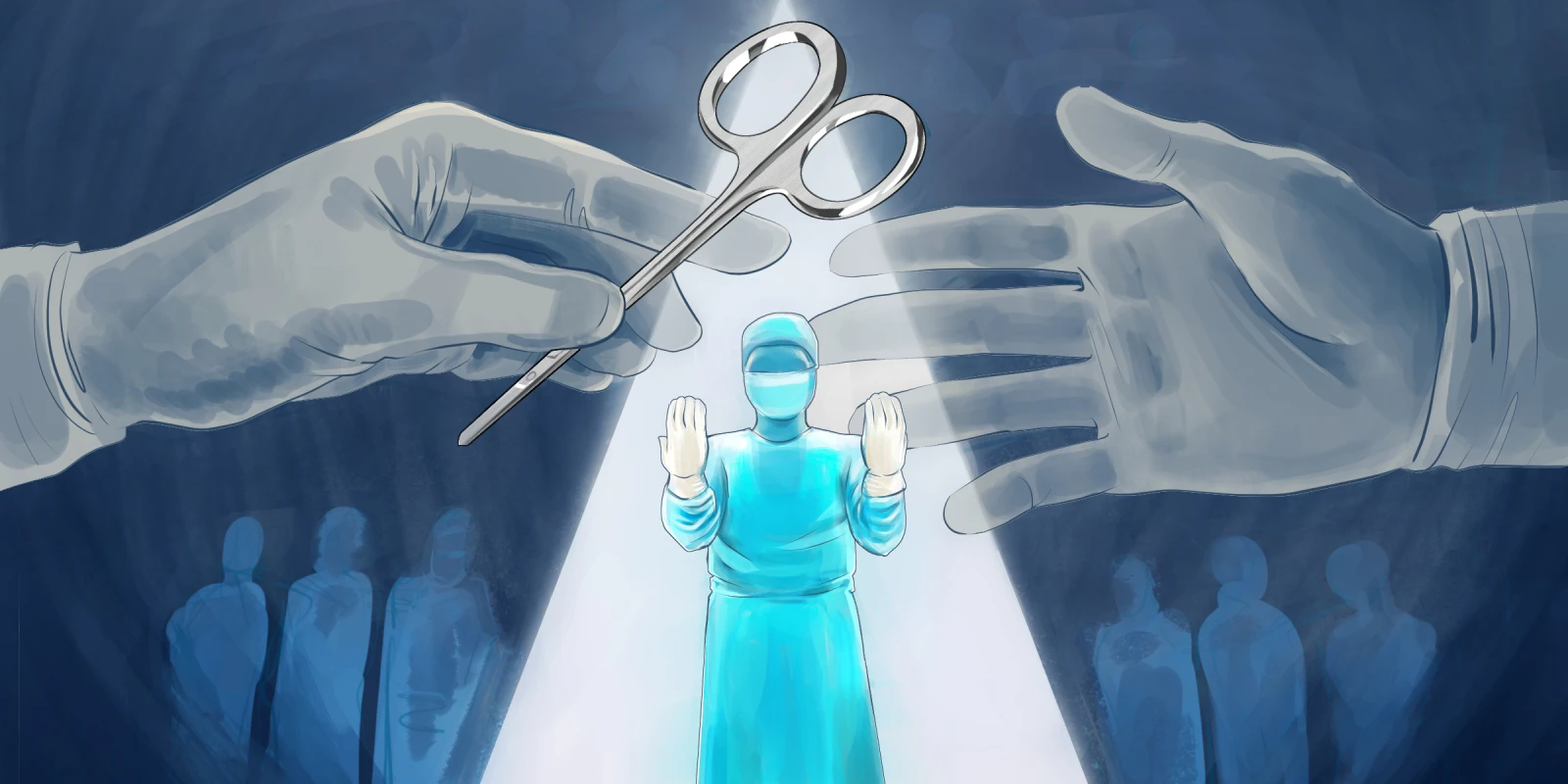I looked up from my phone to watch as Mr. B was wheeled into the OR. I could almost picture that, underneath the various peripheral lines, the ECG wires, and the tape holding his endotracheal tube in place, he was sleeping. As I helped transfer him to the operating table, my eyes landed on his hands and found his fingernails were well trimmed. It was a curious thing to think about: Who had groomed him so well? Was it his family? Perhaps a bedside nurse? I knew it couldn’t have been him, after all. For the last several days, Mr. B had been categorized as brain-dead.
I had never witnessed an organ procurement before, and one evening on the second week of my transplant surgery rotation, the fellow on service offered me the chance. I didn’t know what to expect, and was surprised to find the OR being set up as if for an ordinary surgery. But this wasn’t ordinary. The patient was brain dead, and his nails were well trimmed.
The nurses and surgeons bustled about, jokes filling the room to hide the grim nature of this operation. After the patient was brought onto the table and secured, a timeout was called. Business as usual. Except, something different at the end: a moment of silence. The nurse read out an honorary statement dedicated to Mr. B’s donation, to this great act of giving. And, for ten seconds, the room stood in silence, broken only by the rhythmic beeps of the heart monitor. I wondered at the paradox of a regular heartbeat in someone who, by all legal definitions, was dead.
Then, an opening was made on his front side, from the collarbone to the pelvis. I had never seen an incision so large; I felt like an extra in an '80s slasher movie. The room filled with smoke and the scent of charred tissue, the signature mark of the Bovie. A bone saw was brought out, and with four precise strokes it split the sternum, screeching all the while. The work was done quickly, and the abdominal contents were soon fully exposed. I was transported back to first-year anatomy lab, standing over my cadaver, identifying vessels and landmarks in my head. A moment of shame draped over my shoulders; it felt impersonal to view Mr. B as a specimen.
A call was made by the surgeons: “Proceeding with cross-clamping!” From my perch at the head of the bed, I watched a new flurry of activity as the fellow went about clamping the hepatic vessels and aorta. I turned to check what the anesthesiologist was doing, only to notice he had left. Moments later, the patient’s oxygen saturation levels began to plummet, along with the pitch of the monitor’s sounds. His heart rate and blood pressure were crashing too, even as my own increased. I went to say something but noticed no one else paying any mind as alarms began to blare from the monitors. “Why is no one panicking?” I wondered.
I realized then why we had the moment of silence: We were allowing Mr. B to pass away. Yet, that couldn’t have been the correct terminology. He was brain-dead, which meant he had already died, right? Was there any significance to this “second death”? Could we still say that any part of Mr. B was alive? How could we, with any accuracy, identify the exact moment that his soul passed from his body?
While my mind was stormy with considerations of life and death, the operation continued. Soon there was a newfound paleness in Mr. B’s forehead, a telltale sign of his static circulation. The steady rise and fall of his chest had ceased. Crushed ice was poured into the abdominal cavity to preserve the organs, and, in time, the liver and kidneys were extracted from the patient. I couldn’t look away, fascination and macabre tension battling for dominance. The team worked on the back table to trim the vital organs, and I left soon after.
The night seemed more substantial on the walk home as I struggled to decipher my puzzled thoughts. I was a different person, wearing the same wrinkled scrubs, with some part of me gained or lost during the hours I bore witness. I used to think of death as a very final state of being: One moment you are here, and then the next, you are somewhere else. But that philosophy had perished with witnessing Mr. B's "second death." It had become more of a spectrum to me. The death of the mind, the death of the body, the death of the spirit … these now felt like distinct entities. The shadowy nature of death melted away under those pale OR lights.
As I lay in bed that night, I was comforted by the fact that Mr. B’s death carried at least some form of silver lining: the second life that was gifted to the organ recipients. On the transplant service, I have seen truly remarkable changes in patients after receiving a new liver or kidney. The fatigue they carried for months or years vanished overnight. Bilirubin and creatinine levels swan dived into normal ranges in a matter of days. And, most importantly, gratitude and excitement about their future glowed so brightly in their rooms. With a single procedure, the weight of the world had disappeared from their shoulders.
I signed up to be an organ donor myself. I hope that my death can bring a second chance to someone else. And I hope that in my final days I’ll have someone at my bedside to comfort me (and to keep my nails well trimmed).
Have you had an experience with a patient that changed your outlook on death? Share in the comments.
Andrew Schmidt is a third-year medical student at UVA. He is interested in medical education and narrative medicine. He enjoys running, writing, reading, and making bad jokes in his free time.
Illustration by April Brust






